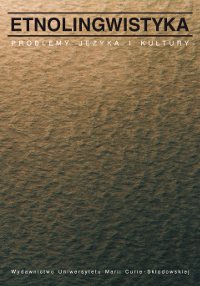SYMBOLIKA KOLEKTYWNA W POLSCE I W NIEMCZECH (PORÓWNANIE INTERKULTUROWE)
COLLECTIVE SYMBOLISM IN POLAND AND GERMANY: A CROSS-CULTURAL STUDY
Author(s): Michael FleischerContributor(s): Magdalena Schmidt (Translator)
Subject(s): Anthropology, Language studies, Language and Literature Studies, Applied Linguistics
Published by: Wydawnictwo Naukowe Uniwersytetu Marii Curie-Sklodowskiej
Keywords: collective symbols; Polish national culture; German national culture; comparative studies; questionnaire-type research
Summary/Abstract: ‘Collective symbolism’ is understood as linguistic signs with axiological load, positive in truth, development, peace or negative in hatred, loneliness, war etc., both groups being important in Polish or German national cultures. The questionnaire-type research, carried out in Poland in 1993 and in Germany in 1994-1995, discussed in greater detail in the author’s Das System der polnischen Kollektivsymbolik. Eine Empirische Untersuchung (1996), constitutes a part of a wider comparative research scheme comprising similar prospective research in Byelorussia and Russia. Such research involves three stages: from determining the set of collective symbols, via reconstructing their hierarchy, to approximating their semantics.Having outlined the basic aspects of his theory of discourse in the introductory section of the article, the author presents the most important results of the empirical research. Germans have been found out to value symbols of everyday life, such as a car, money, health or nature. Poles, on the other hand, value ethical symbols, such as freedom, honour or love. A great number of symbols is common to the two nations: friendship, truth, peace, protection of the environment, freedom, independence, etc. However, there is a marked difference between eastern and western Germany, the preferences of the Polish people, i. e. a highly positive attitude towards tolerance, justice or faith, being closer to those of the Germans from the eastern part of the country.
Journal: Etnolingwistyka. Problemy Języka I Kultury
- Issue Year: 11/1999
- Issue No: 11
- Page Range: 69-106
- Page Count: 38
- Language: Polish

